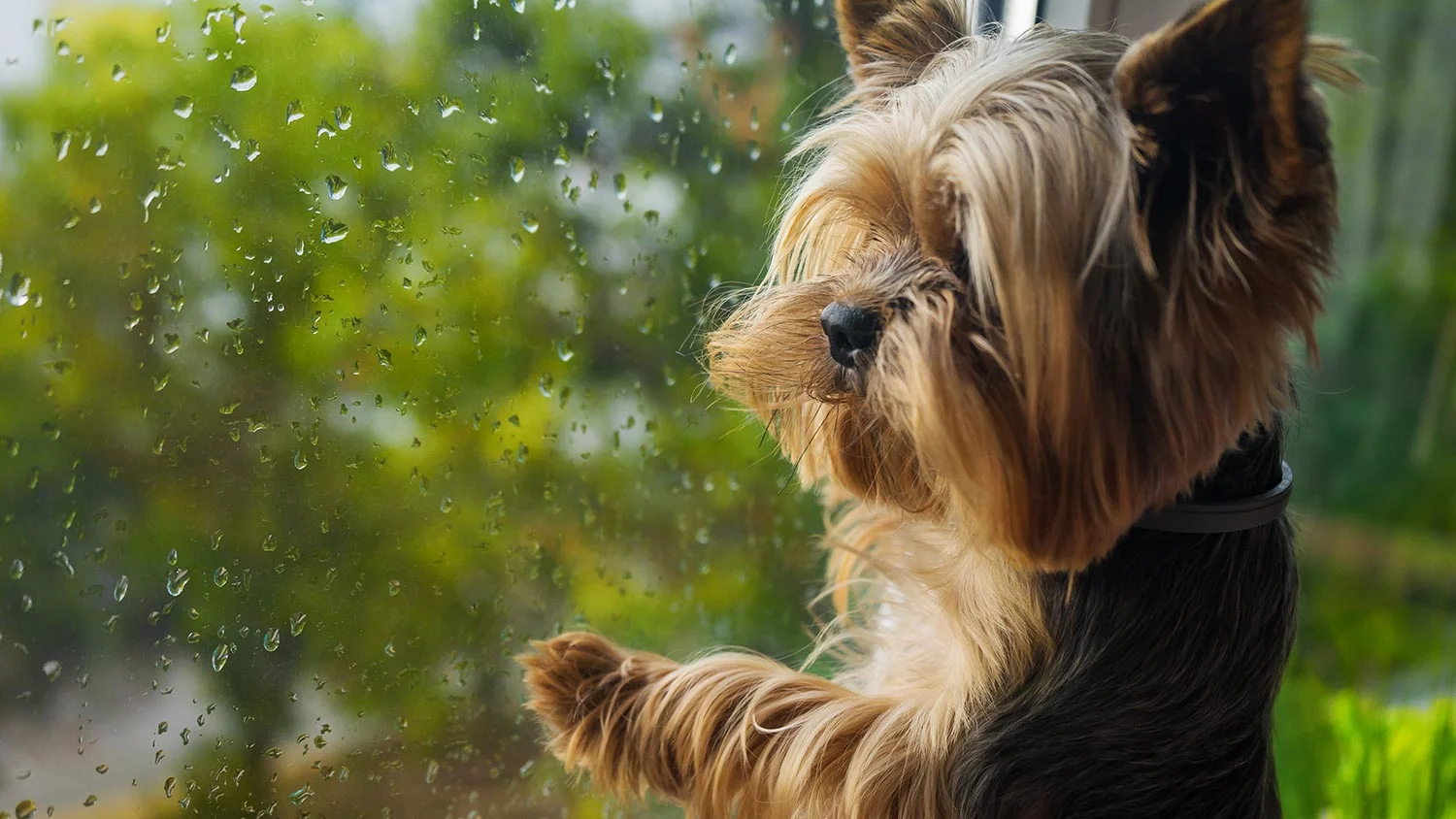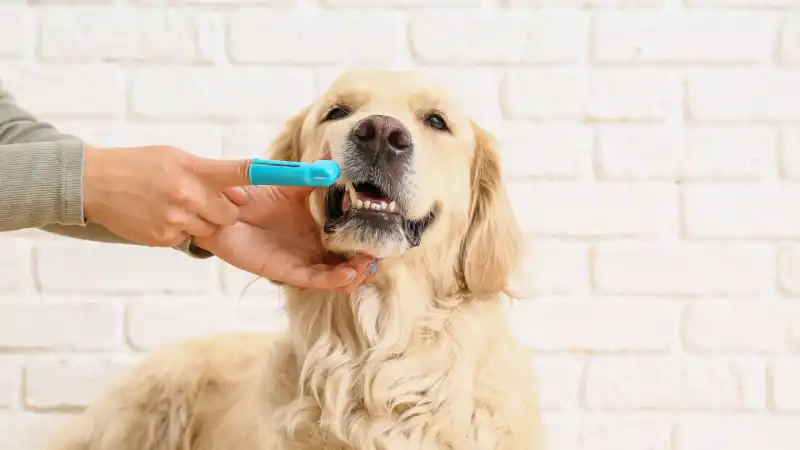Hurricane Safety for Dogs
Hurricane season hits full stride in September. Many areas not usually affected by storms have been hit in the past few years: are you and your ready just in case?

Hurricane season ranges from June to November, with the most dangerous month being September each year. After several devastating storms, many residents of hurricane-impacted areas are hoping to establish more thorough disaster preparedness plans for their family and pets. Whether you choose to evacuate with your dog or hunker down and ride out the storm, it’s important to have an emergency plan in place before a natural disaster occurs.
Track the Storm
Being informed is one of the best ways to stay safe in a hurricane. Keep an eye on the news or leave a radio running to stay up to date of the hurricane’s path, strength, and the state’s current status. You should know if residents are ordered to evacuate so you can pack up and leave right away!
Stick with your Emergency Plan
It’s easy to create an emergency plan, but the key is to stick with it. Making a last-minute decision that goes against your plan opens you up for unexpected situations which could lead to an accident. Your plan should include how long you intend to stay in your home before choosing to evacuate. Some people may want to remain on their property up until they’re ordered to evacuate, while others may pack up their pets at the first sign of a hurricane.
If you’re ordered to evacuate, immediately jump into action. Not all evacuation shelters are pet-friendly, so have a plan in place for your dog. Make a list of pet-friendly hotels or evacuation shelters along the evacuation route that you’ll need to take. Print out directions to these locations and keep the directions handy. Below are some websites that can help you locate dog-friendly accommodations:
Prepare Supplies
Before the threat of a storm, you should be prepared to face a natural disaster with your pets. Create a pet emergency kit that includes everything your pet will need to ride out the storm either in your home or in an evacuation shelter. Pack enough food and water for your dog for at least three days, along with his favorite toy, a crate that he can comfortable stand and lay down in, and a pet first aid kit. Experts warn against leaving your pet behind during a storm – if it’s not safe for you, it’s not safe for them.
Identification
Your dog should always wear his collar with ID tags during a storm. If your dog gets loose from your home or while you’re evacuating, having this form of identification will make it easier for him to be returned to you.
Consider microchipping your dog to ensure that he’ll always have identification even if he loses his collar. Many veterinarians and animal shelters can scan a lost dog for a microchip, contact the pet recovery service and notify you of your dog having been found. Microchipping doesn’t hurt, only takes a minute to do at your next vet appointment, and if you register your microchip with AKC Reunite you only have to enroll once for your dog’s information to be on file for his entire life.
Riding Out the Storm
If you choose to stay to protect your property during a hurricane, there are some safety precautions you should take to keep your pets safe. Remember that while you may have chosen to stay, your dog’s instincts may tell him to flee. Dogs can become anxious and react out of character when stressed by the conditions of a hurricane. Many animals will resort back to their natural instincts in the event of a natural disaster and often will seek small areas to hide in. Close off dangerous spaces and know all of you dog’s favorite hiding places in case he disappears into one of them during the storm.
Determine the safest room in your house that provides an emergency exit but has little to no windows. This should be your safe room where you put emergency supplies and where you can seek shelter should the storm become too dangerous to inhabit the rest of the house. You may have to leash or crate your dog in this room. Remember that flooding often results from a hurricane’s torrential rainfall and storm surge, so choose a room that is high up with an exit that you can quickly use should escape become necessary.
Stay inside during the storm, even if it looks like the weather has calmed down. Many people venture out during the eye of the hurricane and become injured when the storm picks up and they are still outside. Set out puppy pads for your dog to use and change them out frequently to keep your home as sanitary as possible.
Evacuate
If you choose (or are ordered) to evacuate, you should have already prepared directions to an evacuation shelter, pet-friendly accommodation or relative’s home. Plan multiple routes to evacuate as you may come across standing water, downed trees or other dangers blocking the road. Emergency workers often can recommend the best route to get you out of harms way.
Take all of the supplies that you packed in your dog emergency kit, as pet-friendly accommodations won’t provide you with things such as dog food, toys, etc. Pet-friendly centers often require veterinary records and proof of vaccination, so keep these handy and try to call ahead to the center to ensure they still have room for you and your pets.
Thanks to the PETS Act, FEMA is authorized to provide rescue, care, shelter and essential needs for people with pets. If you and your pet become trapped in your home with rising water or severe damage that makes it unsafe, the emergency rescue team will help to rescue you and your pet. However, at times emergency teams will be inundated with rescue calls so you can’t count on their help and may be left to your own devices to escape to safe ground. Rather than risk your pets lives and your own, choose to evacuate when initially ordered and take your dog with you!
If Your Dog Gets Lost
If your pet gets loose and takes off, don’t chase him out into the storm. Flying debris is the most common cause of injury during a hurricane and if you become injured, getting your dog back will become even more difficult. There are many different steps to finding a lost dog. Your top priority should be to contact your local animal shelters as soon as possible to report that your dog is missing. Use social media to post information about your dog including photos and any names that he goes by in case someone in your community should find him.
Returning Home
Returning home after a storm can be a stressful event for your pet. Ensure that your home is cleared of debris and your dog can safely move through your home. Keep your dog on a leash for the first week or so when outside, as his surroundings may look and smell different and he may become disoriented. Check the fencing around your yard to ensure there isn’t any damage that would allow your dog to get loose.
Try to start your dog back into his usual routine after the storm. This will provide him with a sense of security and make the transition easier. Restock your emergency kit and make any necessary changes to your emergency plan so that you’re better prepared in case of another hurricane!

Mary comes to AKC Pet Insurance with an extensive background in animal care. As a lifelong animal lover, she has a passion for promoting pet health and wellness. Mary lives in Kentucky with her orange kitty, "Cat" and her dog, " Wubbi".
READ MORE ARTICLES

